Do you love the left lane?
When you head out on the open road, do you automatically steer toward the left lane because that’s traditionally where “faster” drivers are known to go? And while there’s nothing wrong with using the left lane as it’s intended, people who drive slowly in that lane could find themselves in trouble with the law.
Much of the current misunderstanding over the left lane stems from the 55 mph national speed limit that was enacted in 1974, according to the National Motorists Association (NMA), a grassroots drivers’ alliance that lobbies for traffic regulations and safety issues. Before this, passing on the left was an unwritten rule of the road, but after the speed limit was enacted, drivers believed that if they were maintaining the posted speed limit then they could chill anywhere. “Because the speed limit was too low, drivers trying to pass weren’t allowed to and it caused a lot of problems, and it still does,” says Shelia Dunn, Communications Director of the NMA.
Reserving the left lane only for passing other cars—known as “lane courtesy”—reaps surprising benefits, however. Here’s why you should reserve your left-lane use for passing only.
You’ll Avoid Tickets And Fines
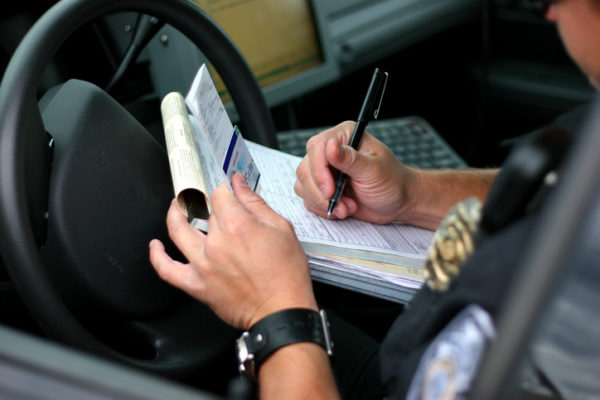 People have different interpretations of how to drive in the left lane, but staying there when you’re not passing isn’t allowed in most states, despite what some drivers might think. Blame the confusion on the lack of a nationwide law. In 29 states, there are laws that any car moving slower than the surrounding traffic should be in the right lane, while other states are stricter and designate the left lane only for turning or passing. In Georgia, it’s actually a misdemeanor to move slower in the left lane than surrounding traffic. This year, Tennessee cracked down and now has established a $50 fine for slow left-lane drivers.
People have different interpretations of how to drive in the left lane, but staying there when you’re not passing isn’t allowed in most states, despite what some drivers might think. Blame the confusion on the lack of a nationwide law. In 29 states, there are laws that any car moving slower than the surrounding traffic should be in the right lane, while other states are stricter and designate the left lane only for turning or passing. In Georgia, it’s actually a misdemeanor to move slower in the left lane than surrounding traffic. This year, Tennessee cracked down and now has established a $50 fine for slow left-lane drivers.
It’s Safer
Beyond avoiding fines (always a plus!), abiding by lane courtesy makes the roads safer for everyone, as faster drivers have a quick and easy way to get around slower drivers. “You’re less likely to get into an accident because traffic is always flowing and more consistent,” says Dunn.
You’ll Save On Gas
Following the letter of the law can save you a few bucks, too. Maintaining your speed and sticking to the right can get you better gas mileage. You’re also doing planet Earth a solid. Less weaving in and out of lanes is more fuel-efficient and better for the environment, so even if you forgot to recycle last week, you can still be a tad proud of yourself if you stick to the right.
You’ll Stress Less
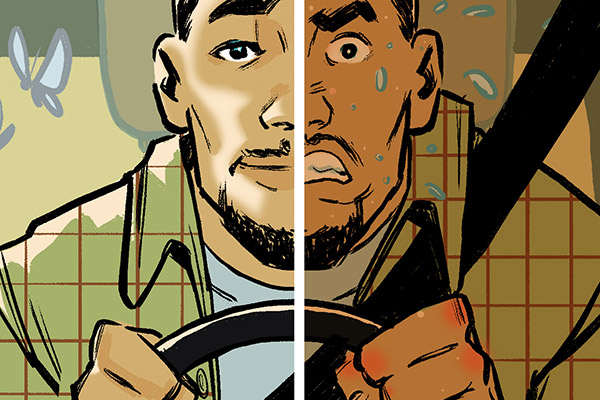 Trying to zip around cars doesn’t significantly improve your commute time, either. “If you remain at a consistent speed limit and only drive to the left if you need to, you’re going to ultimately get to your destination faster,” says Dunn. Plus, lane courtesy might just be the quickest cure for road rage. “If you’re weaving in and out and cutting people off, you may cause road rage in others, and that’s what we really need to stop,” says Dunn.
Trying to zip around cars doesn’t significantly improve your commute time, either. “If you remain at a consistent speed limit and only drive to the left if you need to, you’re going to ultimately get to your destination faster,” says Dunn. Plus, lane courtesy might just be the quickest cure for road rage. “If you’re weaving in and out and cutting people off, you may cause road rage in others, and that’s what we really need to stop,” says Dunn.
Of course lane courtesy is easier said than done, especially in states with heavily trafficked motorways. But you don’t have to give up entirely. “Don’t just park yourself in one of the middle lanes,” recommends Dunn. “You should really be cognizant of trucks and what everyone around you is doing, and try to drive right as much as possible.” But staying in the right lane doesn’t mean you can zone out, either: Remember to be aware of and make room for merging vehicles.
In the end, lane courtesy actually helps all drivers treat one another as equals on the road—and makes the highways and freeways a safer space for everyone.
Before you take off to your next destination, get a fast, free auto insurance quote from GEICO to see how much you could save.
Next: The rules of the road aren’t always cut and dry, so take our “Are You a Good Driver?” quiz to find out how you compare with your fellow motorists.
By Kara Cutruzzula




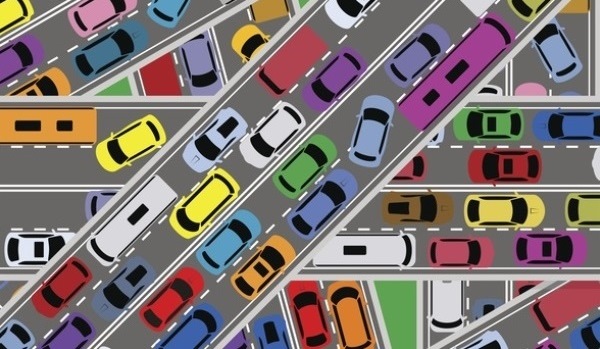
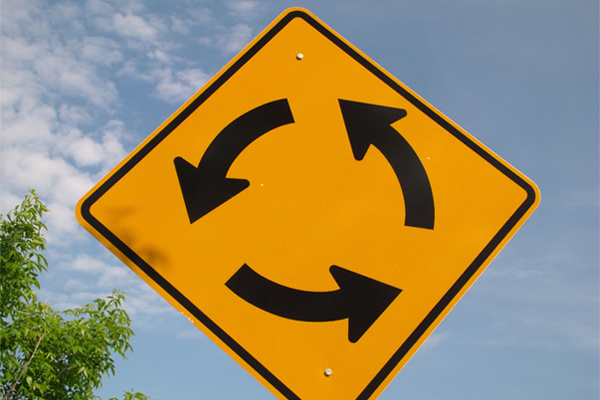
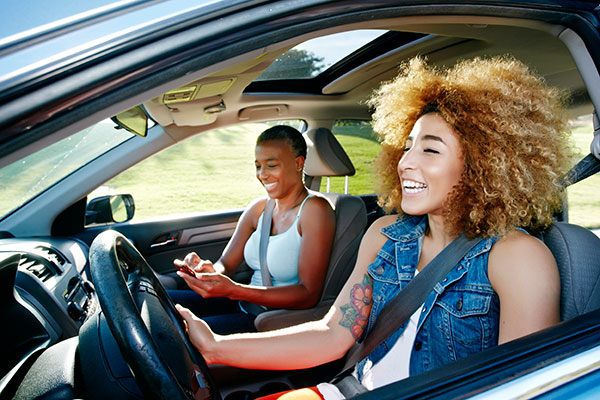
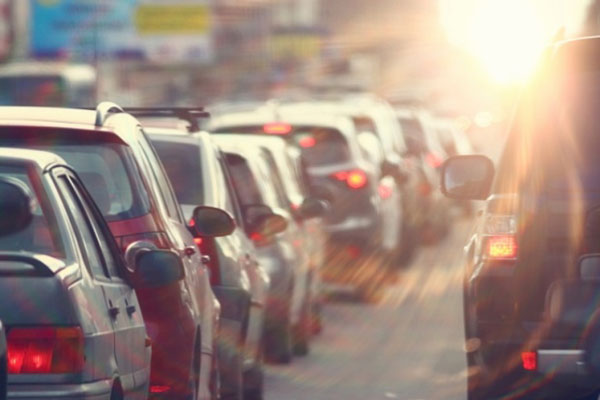
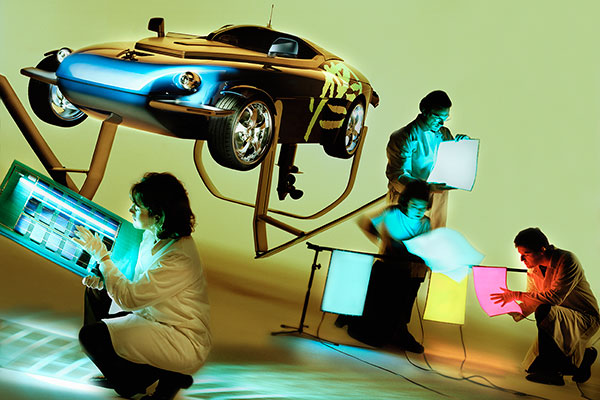
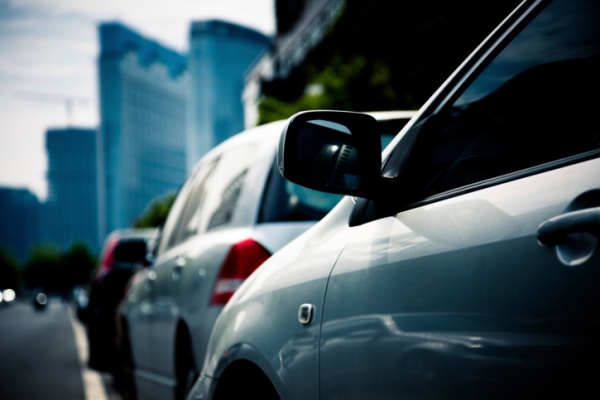
George Friel says,
In the United States we actually drive on the right and this allows any amount of traffic to flow in the direction the engineers intended for that road to follow. This arrangement works flawlessly until something in that right most lane causes flow to be obstructed. Thus engineers devised the passing lane to the left, in an effort to maintain the efficiency. This simple rule borrowed from maritime conventions works exceptionally well and is not canceled by the addition of multi lane highways. the left most lane in any scenario should be kept clear unless one is in fact passing objects proceeding in lanes to its right. Its always interesting when on limited access roads how the merging of entering traffic is complicated by already accessed traffics inability to simply move left and pass with safety as the entering vehicle matches the prevailing speed. That’s the facts and everything else is justification of bad driving habits.
George Friel says,
Everything about this article is yes, yes, yes unfortunately we live all to much these days in a no, no, world. A world awash in negativity and in large part fueled by the insistence that opinion overrides facts.
Al Leach says,
Thank you for publishing this information. It should be on the news and in news papers because in the U.S. we have no driver training so people don’t know what to do on the road. Some people will drive the left lane thinking they are within their rights as long as they drive at posted speed. I’m glad at least some states are cracking down.
Cornelio Reformina says,
It is really frustrating to be behind a slow vehicle at the left lane specially when the right lane is full of vehicles or has a vehicle moving as slow along side the other vehicle. If the two vehicles hug both lanes, all vehicles behind fall in two long, long lines!
Jim Campbell says,
People who drive slow in the left lane, especially when there is someone also driving slow in the right lane, have learned one thing: IT’S THE BEST WAY TO BE FIRST! NO ONE IS IN MY WAY!
Those who manage to pass will go on & and those who can’t won’t and don’t matter.
Kalika says,
I agree with most of this, except for “…and make room for merging vehicles.” It is really no one’s responsibility other than the driver who is merging to ensure they merge into the flow of traffic. That’s what the ramps are for – to increase your speed so you can seamlessly merge into traffic. Or if you’re on the highway changing lanes, it’s the merger’s responsibility to be aware of the cars around them and ensure safe distance and so on. Those who are already in the lane you are trying to merge into are already established in that lane and have the right of way – it’s not their responsibility to create a space for you.
Erin says,
That is selfish and unrealistic. I assume you’ve never driven in traffic? Bumper to bumper traffic and you don’t adjust for merging traffic? So I guess they get to sit on the ramp until rush hour is over.
Heaven forbid you should be courteous, as this atlrticle is suggesting, and slightly adjust your speed to make merging on to a highway just a little bit easier for your fellow man.
Merging lanes? Yes, it’s the responsibility of the person merging. Merging on to a highway is completely different.
Michel Ridgely says,
Well Erin, sounds like some driving school is in order. Kalika is correct, merge lane means exactly that “merge.” Far too many times I have been run out of my lane at highway speed by a merging driver forcing themselves (at a much slower speed) into my lane by cutting me off. Merge means merge, otherwise it is failure to “yield right of way” which is a violation of the law.
move over says,
You are totally wrong. The acceleration part of the on ramp is supposed to be used to get up to highway speed to seamlessly merge without danger or slowing traffic. The person on the highway has the right of way as Kalika said. I find too often a driver trying to merge into highway speed traffic doing 20 or even 30 mph less than the speed of traffic on the highway and causes every one to brake. This has a domino effect and is very dangerous. She was NOT talking about bumper to bumper traffic.
I always accelerate to a slightly higher speed than the highway traffic as it’s easier to merge and I don’t cause drivers to hit their brakes. When one vehicle brakes all the rest of them behind have to brake also. So it slows the entire highway from that vehicle backwards. This leads to traffic backups.
I have read a few of your posts and not one of them is correct. I suggest you enroll in advanced drivers school and relearn traffic laws and “cause and effect” scenario’s.
bBREZV says,
Back when there was driver training, we were taught to change lanes to allow traffic to merge from the ramps. In effect, that is “passing.,” because a vehicle can’t instantly merge and attain highway speed. Now there is a law in VA that you must change lanes when you see a stopped police vehicle on the shoulder. As for “right of way”…don’t ever assume that you have right of way. Be aware and be courteous. Getting hit, even if it’s not your fault and you had the “right of way,” hurts.
Matt says,
Another important reason for staying out of the left except to pass is to allow vehicles from the opposite side of the road an easier merge into traffic. No one seems to know this. I see slow drivers camped out in the left lane all the time even when passing a road sign that says “STATE LAW: KEEP RIGHT EXCEPT TO PASS “
donald ambrico says,
I like using the left lane especially at night outside the city to avoid deer. Saved me a few times from hitting one
brent says,
ok, i understand your comment on deer being by the side of the road. however, if you’re going to drive slow in the left lane, your chances of causing an accident with upcoming traffic are probably higher than seeing a deer standing in the right lane of the highway. move over to the right lane and drive slower if you’re that concerned.
Jesse says,
Deer only come out from one side of the road?
Dwane Carpenter says,
Guess the states better fix the roads then. I40 across Arizona has craters in the right lane big enough to swallow the front end of a car. If your required to stay in the lane it should be drivable, or be responsible for the damages to the vehicle.
After all the state is right there to collect the road tax from the people, why are the roads in such bad shape?
Rafael Ortiz-Vazquez says,
I was always in the understanding that the left lane was for passing, except during heavy traffic commute in a city. Traveling long distance on any highway, the
far left lane must be made for passing only. It is so annoying to find people driving on all lanes blocking the road at speed less than the limit posted.
Ryan Houghton says,
In all situations, using the left lane only to accelerate (slightly) to pass traffic with the sole intention of immediately moving back right when safe would single-handedly eliminate traffic (non-accident or construction traffic, of course). It’s honestly as simple as that. It would also allow any driver to enter the left when a turn was approaching, eliminating the feeling that one must get there (way too) early, snowballing into a stuffed left lane.
bBREZV says,
Agree!
Adam says,
I agree with this article in every aspect. I’d like to add, I *hate* when people pass in the right lane, especially when I’m going the speed limit (or higher?).
I’ve always said… If I was president, I’d pass a “Keep up” law which says you can be pulled over for not keeping up with the flow of traffic regardless of speed limits. If you’re surrounded with cars going above the speed limit, YOU are the dangerous one if you don’t keep up or get out of the way. Same for any situation… Slow people can be a severe risk just the same as fast people can.
alanna says,
Driving the speed limit or higher does not mean you get to hang out in the right lane. Many states already have minimum speed laws as well. Trucks generally have to drive 55 mph, so if you’re driving slower than them on a highway, you should probably not be on it in the first place.
John says,
If people are passing you on the right, you are moving to slow and should humbly shift right so others have the freedom to go faster.
Somebody get this duck away from me says,
Who is in the right. The person in the left hand lane driving the speed limit, or the person in the left hand lane wanting to drive 70? The law says the limit is 65 on most highways, it also says not to be in the left hand lane other than to pass other vehicles. So both are ignoring a law by doing what they are doing.
Saying roads are less safe because someone stays in the left hand lane is ridiculous. They are less safe because of the person who is so mad and in a rush that they feel it is more important for them to break the law to get around the person (who is breaking the law) that is blocking them from breaking the law. So instead they drive faster or break more laws by passing in other lanes.
Ryan Houghton says,
Too much emphasis on the speed limit rather than safety. If you are not passing vehicles, then you have no business being in the left lane. If someone else wishes to do something that makes you uncomfortable, that’s on them. Your job on the road is to pass left, drive right, in all situations. When you enter the left lane, you should accelerate safely to pass, and then move over when clear.
Ryan Houghton says,
Also, when you block the left lane, you enrage drivers. Which I do not condone. It’s just what happens.
Ali says,
If you’re not passing, get out of the left lane. If you’re going slower than the person behind you, get out of the left lane. I don’t care if you’re going 75 MPH in a 65 MPH zone. If they’re going 80 MPH, you just get out of the way. Seems to work just fine for Germany.
People are usually speeding because they feel comfortable handling their car at higher speeds, or because they are in a rush. If you’re moving the same speed as traffic, what is the reason to be in the left when the right lane will serve the same purpose?
John says,
The left lane needs to be clear for emergency vehicles. There is nothing worse than responding to an emergency and the passing lane is clogged up by vehicles not passing. Just obey the law. It is there for a good reason.
Second would be to allow those who wish to pass the ability to do so. This can also be done legally as many semis are governed to speeds of 61 to 66 mph. The left lane is there to allow cars and trucks to pass the slower vehicles in the right lane.
John says,
It is not your (or my) job to dictate to others how fast they should go in the fast lane. You are needlessly playing cop when you do so, and while you may frame your actions as a public service, there is little public good that comes out of it, and a whole lot of potential consequences, including holding up traffic, causing rage in others and leading them to weave.
The practical beauty of left-for-fast and right-for-slow is that everyone is left with the freedom to go at their own pace without treading on anyone else’s right.
brent says,
the person that is trying to pass on the left is in the right. trying to hold up traffic by thinking that you are the speed police and slowing traffic in the passing lane is a far worse offense.
Todd Martin says,
You’re a citizen not a law enforcement officer! Get over your entitlement issues! And stay in the right lane! You should be cited for and sent to driving school because of your comment!
Lee says,
I think you should also publish an article that informs drivers that in many (or most?) states when there are more than two lanes in a direction on a highway that truckers are not allowed to use the left lane at all and that their passing lane is often the middle lane or the lane adjacent to the left lane. Truckers will often tailgate a driver in the middle lane hoping for them to move over so the truck can pass but auto drivers are often oblivious to the reason why a trucker will do this.
GottaGetAway says,
OMG – probably a good 40% of accidents are related to self-righteous ‘safe drivers’ determine to force others to drive as slow as them. Maryland – particularly eastern part – is RIFE with this. The very first time driving here, me and others in the car remarked that all lanes were going the same speed, so why didn’t they just merge into the same lanes? EGO! Too proud to drop behind the other guy.
The latest game these petty people play is trapping drivers behind them by driving slow to traffic lights about red so you are stuck there, or purposely driving slow enough next to cars in other lanes so you can’t pass and ever so slowly drift into a turning lane.
East and central Maryland drivers are usually like their beloved dish – crabs. If they don’t drive that speed, they won’t let you, either. Crabs in a barrel driving mentality!!!
John says,
If you think Maryland’s bad (and I don’t disagree), you’ll find far worse offenders in Texas, where thin-skinned Texas “pride” (i.e. Insecurity) ensures the left lane is clogged by slow drivers.
Lisa Vee says,
Red lights? Where are there red lights on a highway? I believe this article and us laws for left lanes refer to interstate driving. Not side roads with only 2 or 3 lanes.
LeftLaneLosers says,
Futile article. People are too selfish or clueless. Want lane courtesy? Go to Germany